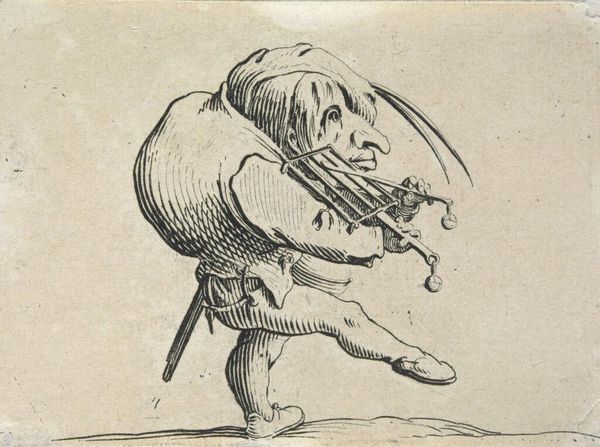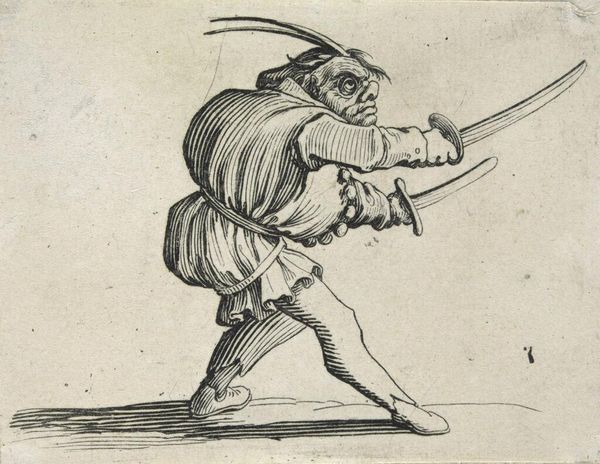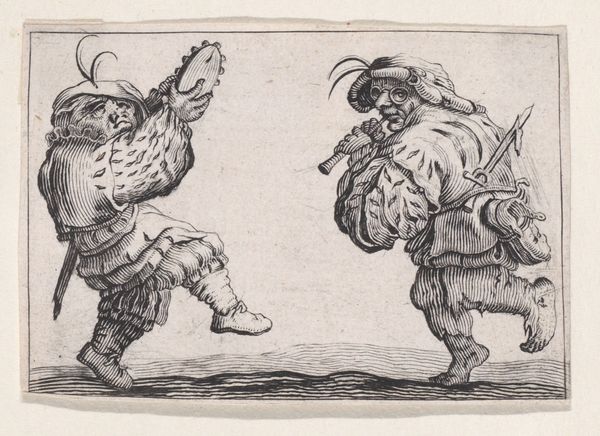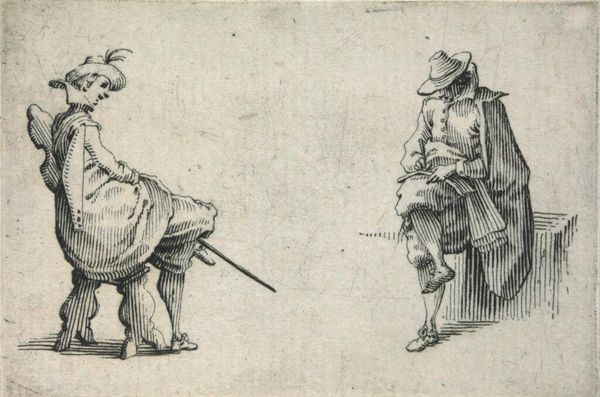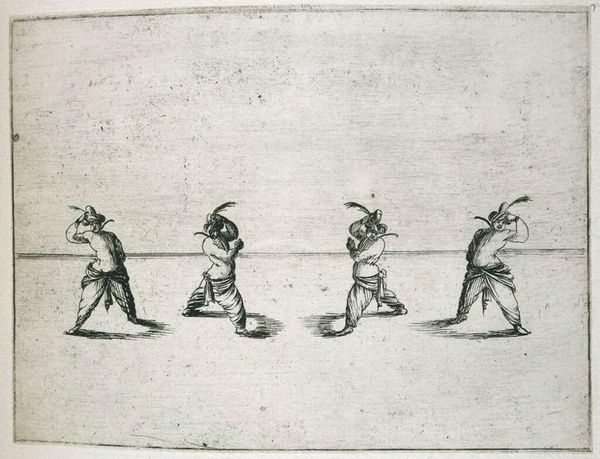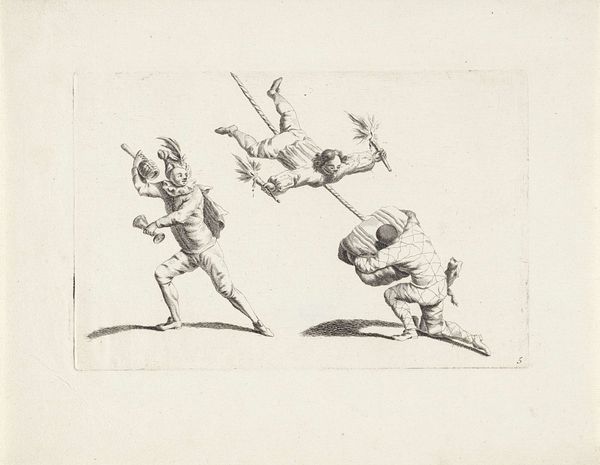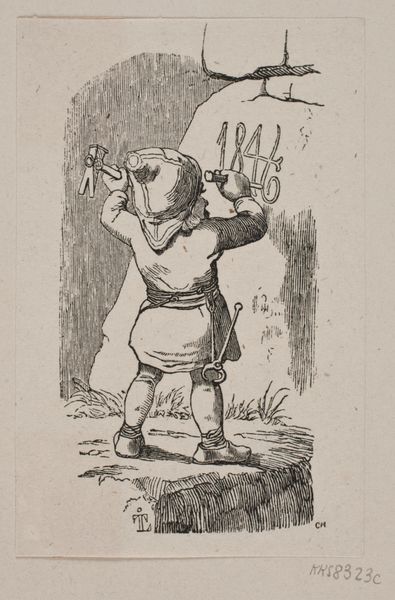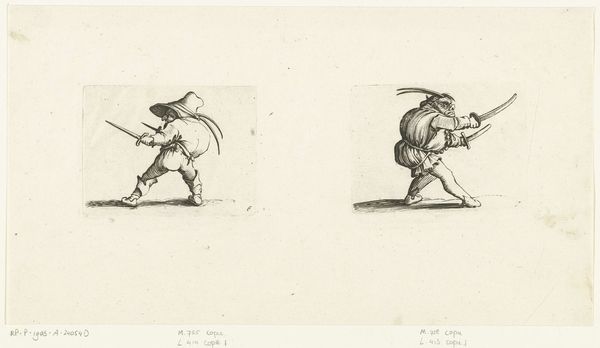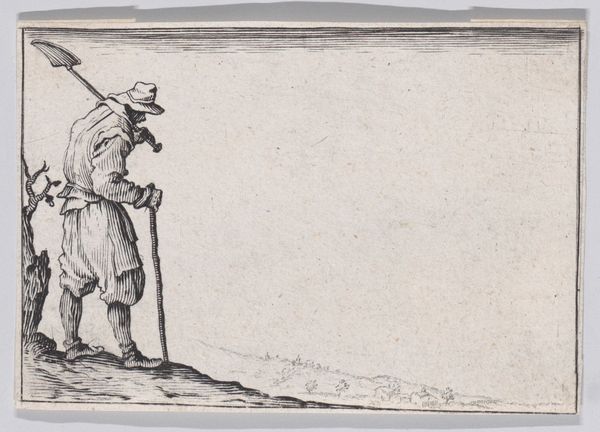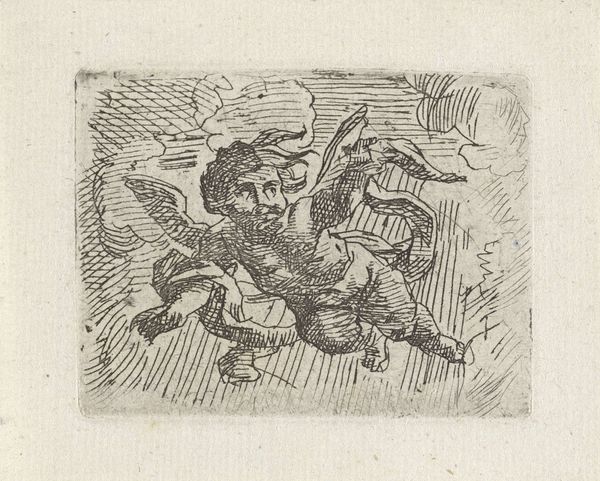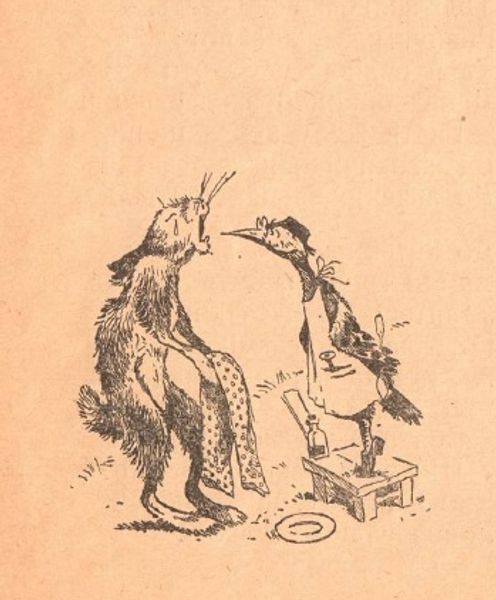
drawing, pencil
#
drawing
#
comic strip sketch
#
quirky sketch
#
allegory
#
narrative-art
#
figuration
#
personal sketchbook
#
idea generation sketch
#
sketchwork
#
pen-ink sketch
#
pencil
#
line
#
sketchbook drawing
#
storyboard and sketchbook work
#
sketchbook art
#
initial sketch
Dimensions: height 36 mm, width 60 mm
Copyright: Rijks Museum: Open Domain
Editor: This drawing, titled "Cupido een ridder aan een touw meetrekkend," made by Isaac Weissenbruch sometime between 1836 and 1912, depicts Cupid leading a knight on a rope. It's whimsical, like something from a fairytale, and the lines are so simple, almost childlike. How do you read this image? Curator: The drawing offers an intriguing study in contrasts. Note the starkness of the lines, the reduction of form to its barest essence. We can observe how the artist has employed line weight to suggest depth, however minimal. Consider the relationship between the two figures. How does the positioning and relative scale impact the overall reading? Editor: It seems like Cupid, being smaller, should be less powerful, but he's clearly in charge. It challenges expectations, doesn't it? Curator: Precisely. Observe how the diagonal line formed by the rope bisects the composition, creating a dynamic tension. The texture within the knight’s shield is juxtaposed against the smoothness of Cupid's figure. These formal elements contribute to the overall impact. Do you find any areas where the line work could be seen as unresolved? Editor: Perhaps in the rendering of the knight’s hand? It seems less defined than the rest of his body. Curator: A keen observation. The artist's choice to leave certain areas open to interpretation encourages the viewer's active participation in completing the image. The formal elements and their relationship invites us to engage with the idea of power dynamics and subverted expectations through visual structure. Editor: I see. I was focused on the narrative, but the way the lines and shapes interact is really what gives the drawing its unique feel. Curator: Exactly. The work allows us to appreciate how meaning can be derived purely from the intrinsic elements of art itself.
Comments
No comments
Be the first to comment and join the conversation on the ultimate creative platform.
